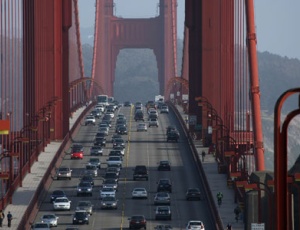�Bay Area Burden,� a new report released last week by the Urban Land Institute Terwilliger Center for Workforce Housing, finds that the average Bay Area household spends more than $41,000 a year � nearly 60% of their income � on transportation and housing costs alone.

These costs vary among the nine Bay Area counties examined, ranging from 54% in Santa Clara to 66% in Sonoma. But the study finds that one-fourth of all households in the Bay Area live in neighborhoods where housing and transportation costs account for 65% or more of income – a level defined as an extreme housing and transportation cost burden.
“This heavy burden forces residents to make extremely difficult decisions that pit housing and transportation choices against other basic needs such as health care, education and food,” says ULI Terwilliger Center Chairman J. Ronald Terwillliger. “These findings reinforce that years of ever-sprawling development have resulted in a growing gap between where people live and where they work.”
Terwilliger, chairman and chief executive officer of Trammell Crow Residential, founded the center in 2007 to help achieve a measurable increase in the supplyof workforce housing in high-cost markets throughout the nation.
“Bay Area Burden,” produced in partnership with the Center for Housing Policy and the Center for Neighborhood Technology, provides a comprehensive analysis of the “cost of place” in nine counties located throughout the San Francisco region by examining the costs and impacts of housing and transportation on residents, their neighborhoods and the environment. The report demonstrates the severity of the problem in the region and how the combined costs of housing and transportation are leaving San Francisco Bay Area workers with insufficient resources to meet their basic needs. The report finds that three-fifths of all Bay Area residents live in communities that are unaffordable to households earning less than $80,000.
Two former Secretaries of the United States Department of Housing and Urban Development, who are now ULI Terwilliger Center Advisory Board members, Henry G. Cisneros and Steve Preston, attended a press conference along with federal, state and Bay Area leaders, to announce the report, a new website (www.BayAreaBurden.org)
and cost calculator, all designed to bring greater awareness and understanding of these issues and their impact on communities.
“Housing that appears to be affordable based solely on housing costs may not be truly affordable when it is located far from transit, jobs centers and services,” says Cisneros. “This report underscores the importance of broadening the understanding surrounding some of the challenges associated with housing affordability to also include transportation costs, travel time and the negative environmental impacts of commuting.”
“Bay Area Burden” also demonstrates the unintended environmental impacts of these decisions. The successful implementation of greenhouse gas emission reduction plans in the transportation sector is particularly important in the Bay Area, where transportation accounts for 40.6% of greenhouse gas emissions, compared to 33% nationally. As reported in “Bay Area Burden,” densely developed urban counties like San Francisco are estimated to have substantially fewer vehicle miles traveled per household (19.4) and thus lower per-household carbon dioxide emissions (20.2) than do more rural and suburban counties such as Solano, where those figures are 50.4 and 49.4, respectively. Considering that less than one in ten (9.5%) Bay Area workers use public transit, compared with 26.5% in the New York Metropolitan area and 11.1% in the Washington DC region, these figures are even more compelling.
“This study reinforces the importance of planning for transportation, housing and the environment,” says Preston. “The cost calculator provides real people here in the Bay Area with a valuable tool to examine the relationship of where they live and work to what they spend on housing and transportation. Given the importance of these issues and the need to develop local solutions, the calculator is a vital step towards empowering residents to call upon policy makers to affect change.”
“Bay Area Burden” highlights that over the next 25 years, the Bay Area is projected to grow by 1.6 million new residents – a 22% increase in population. The report identifies current and future challenges and the opportunities to integrate land use, housing and transportation policies to encourage new residential development in areas that are well served by public transit or near job centers. The data provided on housing and the consequences faced by Bay Area households and the consequences for the environment may help expand awareness of the problem and build support for the resources and high-level policy attention needed to address it effectively in the future.
The release of the report was in conjunction with ULI’s annual fall meeting in San Francisco. The need to build workforce housing closer to employment centers is among many issues being discussed as part of ULI’s overall efforts to promote sustainable communities.

Post a comment to this article
Report Abusive Comment